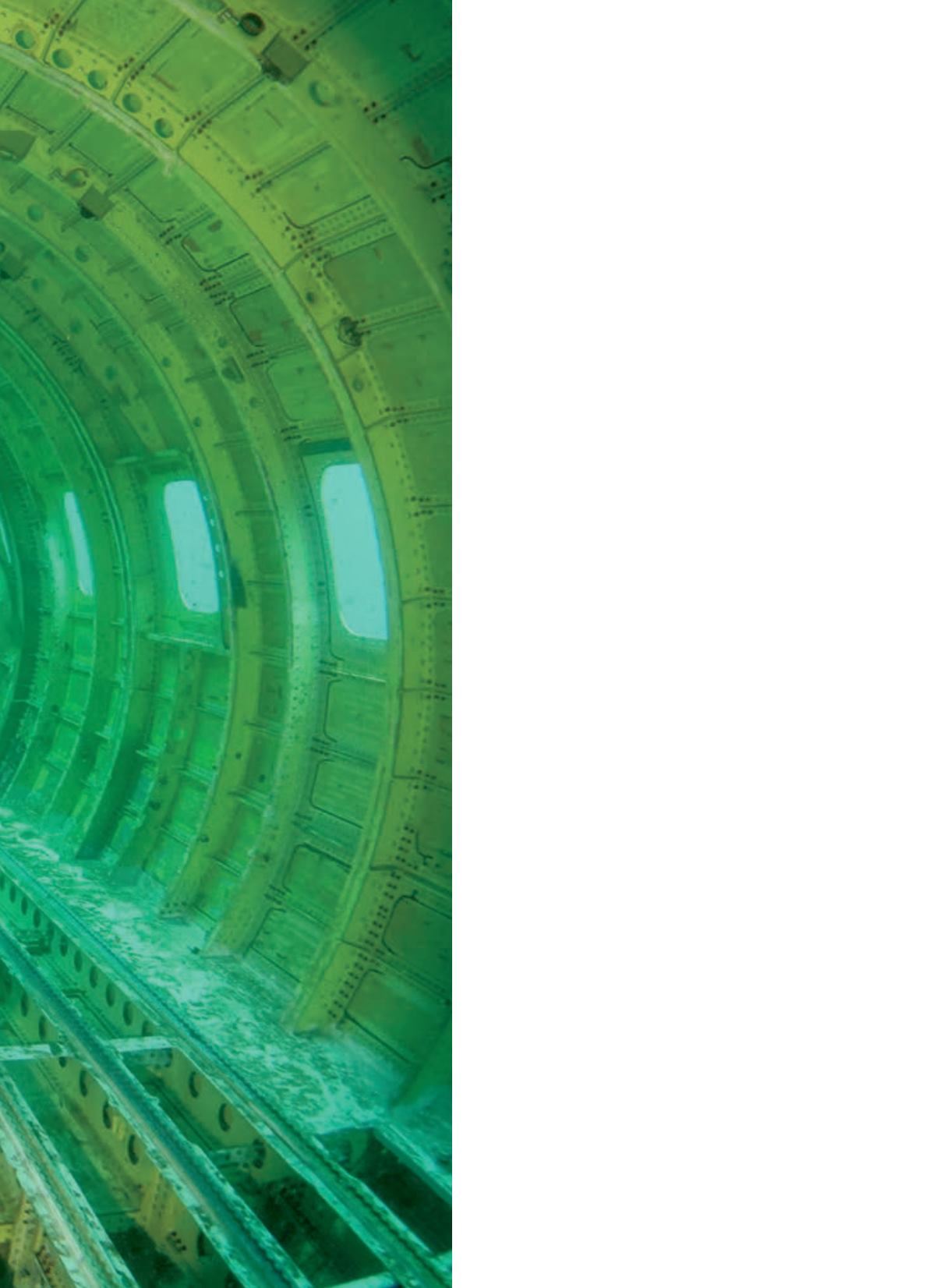
 ALERTDIVER.COM
ALERTDIVER.COM
|
39
Rebreather diver Josh Dykeman
swims through “the jet” for the
first time a few months after it
was sunk in Dutch Springs as a
new underwater attraction.
I
first visited Dutch Springs nine years ago and
was immediately in awe of this landlocked gem.
On an average weekend hundreds of divers from
surrounding states and beyond venture to this
Disneyland for diving. It’s located in Pennsylvania,
which is well known for its sports teams, Amish
country and Hershey’s chocolate. The quaint city of
Bethlehem, where Dutch Springs is situated, is a former
steel manufacturing center and was the largest producer
of ships during World War I and World War II. Now
Bethlehem is known as a Northeast diving hotspot.
In 1935 the National Portland Cement Co. began
mining limestone from the quarry for use in cement
production. Pumps kept water from flooding the quarry.
Through the 1970s the quarry continued to produce
limestone, but when the company went out of business
the pumps were turned off and water rose, creating the
50-acre freshwater lake now known as Dutch Springs.
In 1980 Dutch Springs was purchased and made into
a scuba diving facility. Today the quarry has grown in
popularity and has dozens of underwater attractions as
well as an aquatic recreation area and a rock-climbing
wall. With a maximum depth of 100 feet, the quarry is an
excellent facility for dive training and a reliable place to get
underwater when boats can’t get offshore due to weather.
Around 30,000 divers visit Dutch Springs every year,
and on a typical weekend it’s common to meet people
from all over Pennsylvania as well as New York, New
Jersey, Connecticut, Delaware, Maryland, West Virginia,
Massachusetts, Virginia and even Canada. Groups of
friends, dive clubs and dive shops commonly set up tents
around picnic tables and spend entire weekends here.
These giant social gatherings include events, workshops,
camping and cookouts. You’ll see recreational divers,
technical divers, rebreather divers, photographers, divers
with propulsion vehicles, and even freedivers working on
skills and enjoying the surroundings.
The sight of the still water around sunrise, as a light
mist rises off the surface, is unforgettable. The water
temperature in the summer is typically in the high 70s (°F)
from the surface to the platforms at 25 feet. A little deeper
is a thermocline, beneath which the temperature varies
but is typically in the mid-50s (°F) during the summer. The
visibility also varies; it averages 30-40 feet but can be as
good as 50-60 feet in the winter months when the water is
cooler and algae blooms aren’t present.
DUTCH SPRINGS
Text and photos by Becky Schott


















